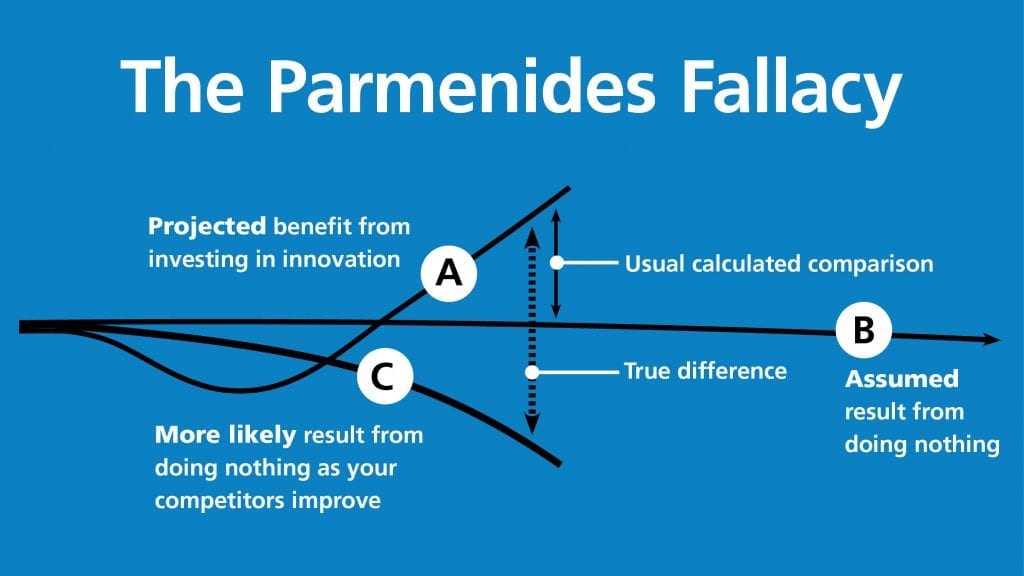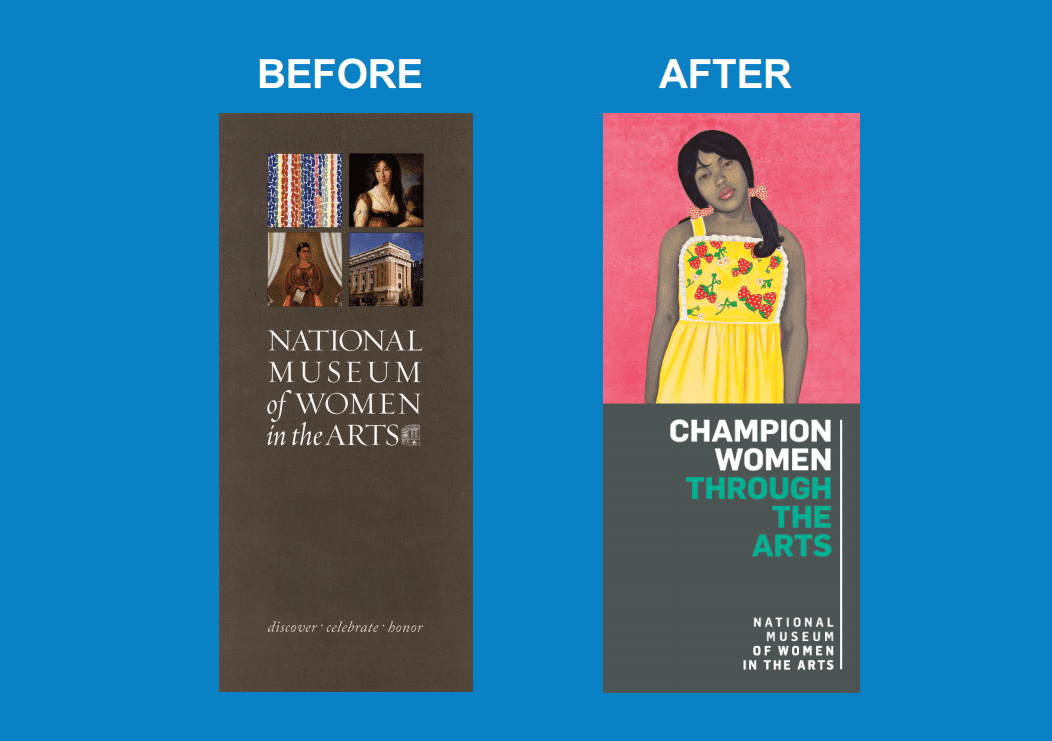Thoughts prepared for the Chicago Museum Exhibitors Group on the topic of Rethink, Rebrand: Why, When and How Museums Reinvent Themselves
This article and those that follow are written with museum examples in mind, but the principles apply broadly. Experience shows us that the sequence of these three questions—Why, When, and How—is important. Only initiate a rebrand with a solid why. Then explore when and how. For example, it is easier to rebrand when you are in a leadership transition, but you should not do it because of the leadership transition.

Why rebrand? Do you have a robust core rationale?
A rebrand should never be undertaken lightly. The effort required is too great, and the implications too significant, to start without a very good reason. But if you do have a strong rationale, the long-term benefits can be substantial. In some cases, a rebrand can be of existential importance. But success rarely comes without pain and failures along the way.
Like many things, rebrands are subject to optimism bias. It is impossible to predict all the obstacles that stand in the way of a successful outcome. It’s also very easy to underestimate the time and effort that will be required. The psychic pain and suffering from an aborted rebrand attempt or one that does not achieve its desired results can have a dampening effect on other aspects of a strategic change effort, and such an experience will certainly push people to question the effort.
How best can one insulate the project from these risks? It starts with having a solid underlying rationale. The more robust and well-communicated the “Why” is, the easier the work will be, and the easier it will be for insiders to support the outcomes. Ensuring the “Why” is broadly understood is one of the core brand team’s key responsibilities. One of my favorite moments in our diagnostic workshops is when the people who came to the meeting thinking it was going to be a waste of time realize how serious the situation is and how important the project’s success will be to the organization.
The more robust and well-communicated the “Why” is, the easier the work will be, and the easier it will be for insiders to support the outcomes.
On multiple occasions, someone has reached out to us in desperation in the immediate aftermath of a failed rebrand attempt. One of the things that surprises me in these situations is the fact that our predecessor did not insist on clarifying the “Why” for the project. One of my favorite testimonials in this context is from Peggy Martin who was then with the Lincoln Park Zoo in Chicago: “I’ve been through 4 different processes with 4 different agencies over my years here. Tronvig Group’s is the only one that worked.”
So what answers to “Why rebrand?” justify taking the risk? My experience over the last 20 years has yielded legitimate reasons that are sufficient on their own to justify a rebrand. They are often interrelated—and excluding situation 4 below, the more of these your situation exhibits, the more powerful the argument for rebranding becomes. They’re worth commenting on one by one.
1. The world has changed around us and we need to catch up
In other words: There has been a shift in the competitive landscape in which we operate, and if we do not adjust, our future prospects will diminish.
This is true on some level for many museums today. There is a trifecta of factors driving this competitive landscape shift: reduced public and governmental support, increased competition due to the proliferation of museums and other informal educational options, and internal expansion in all its forms including larger facilities, growing collections, and intensifying programming schedules. Museums today are being pushed to serve not just as repositories of cultural artifacts but also as drivers of cultural conversation that engage with their audiences in more personal, intellectually accessible, and emotional ways.
Museums today are being pushed to serve not just as repositories of cultural artifacts but also as drivers of cultural conversation that engage with their audiences in more personal, intellectually accessible, and emotional ways.
All these pressures push museum practice ever closer to commercial practice, especially regarding areas like branding. Like commercial enterprises, all museums compete in a marketplace that is changing. The competition may not be as cutthroat as the commercial world, but museums all compete for attendance, mindshare, financial support, grants, and so on. All museums have brands and the relative strength or weakness of those brands plays a significant role in their capacity to survive, thrive, or potentially cease to exist.
To determine whether the changes around you are significant enough to warrant a rebrand, you’ll need to honestly assess your strategic position. In doing so, it’s important to avoid the Parmenides Fallacy:

It is natural to view your competitors as static when they are not. They, too, are updating their strategic plans and seeking to adjust to their changing environment. That means that for any downward trend, such as falling attendance, the cost of doing nothing is ultimately far greater than the short-term costs of taking meaningful action. The natural tendency is to see the world outside as fixed and thus, to underestimate the consequence of inaction.
2. Demographics of the target audience
The need to adjust to shifting demographic realities is another solid reason to consider a rebrand. It is critical, however, to have thought through the implications of the transition strategy so that you do not leave your key current supporters out in the cold and into the arms of some other worthy organization.
A classic example of this situation is the complaint that “our median donor age is 70.” The desire to target a younger audience is appropriate, but we’ve often seen a flawed overreaction where institutions try to cultivate a new audience in their 20s and 30s. Such a dramatic transition can be a long shot, and even if successful, it’s quite a long play because it will take years to develop such a young audience to the point where it can meaningfully replace the older crowd. So you had better have something more up your sleeve if you intend to thrive.
3. Significant growth or merger
Growth or a merger is one of the most obvious and concrete triggers for a rebrand. Perhaps you just merged with another organization and you have to make sense of what the new, larger entity is going to be. In other cases, you have simply grown so much that you don’t recognize yourself anymore and you need to reassess the brand in light of the institution’s current size. Growth is a major source of stress on the coherence of a brand. It makes it harder for brand values to be transmitted osmotically. It makes silos form more easily, often accompanied by disparate priorities that make clarity of vision difficult to maintain.
One of our recent clients started as a small regional institution and was eventually designated a national museum, which caused it to shift its scope and double in size. Working through the operational and behavioral implications of this transformation was a brand project all in itself.
The work on culture and strategy must lead and provide guidance on external brand attributes like the visual identity and messaging.
The work on culture and strategy must lead and provide guidance on external brand attributes like the visual identity and messaging. Doing it the other way around is likely to be messy and wasteful of resources and good will that would be better applied to building the habits of the new brand.
4. Best-kept secret in town
I cannot tell you how many times I have heard, “We are the best-kept secret in town.” If you feel you are, then most likely, you are experiencing the classic symptoms of an underdeveloped or overly complicated brand. It’s a common affliction across the nonprofit world. It is also understandable. You are already doing everything you can to be a great service to the community and to the world through your sometimes precarious existence; you are adding value with every program, service, or exhibition. Is that not enough?
Sadly, it is not.
If you feel you’re the best-kept secret in town, then most likely, you are experiencing the classic symptoms of an underdeveloped or overly complicated brand.
The work on culture and strategy must lead and provide guidance on external brand attributes like the visual identity and messaging.
Complicating this scenario is organizational inertia. Maybe you have always been a sales-driven organization (cultivating grants, donors, etc.) and never found much use for an intentional public-facing brand, or maybe you are a small organization that has never had the staff or capacity to take branding any deeper than your logo and colors. Not having an intentional brand is certainly a sufficient reason to rebrand, but it is also a highly problematic starting point because making the case to undertake the effort and expense is harder than it is in almost any other situation. Having never bothered with branding, why do we need to now? I have heard it: “It’s all just marketing nonsense. What do we need to spend money on that for?”
You have a brand whether you intentionally crafted it or not. Combine that with anonymity, and you have proof positive of an ineffective, accidental brand. Your brand is inhibiting your capacity to fulfill your mission and you need to work on it.
Setting out on the path to create an intentional brand is exciting but has risks. The project may never generate enough energy to break free from the tenacious grip of organizational inertia. The project may expose product problems that will dramatically expand work and cause further disruption. Scary as this sounds, the work of cultivating a sense of urgency around these kinds of problems and channeling that energy toward tackling the problems is the best way forward.
5. Our mission has evolved
Saving the best for last: mission evolution is a very good reason to rebrand. What is your organizational reason for being? Does the current mission still have the capacity to inspire staff and drive innovation? Does the institution need to reposition itself to better serve its constituencies? Has the mission changed over time or is new leadership bringing a new vision of where the organization needs to go so that it can thrive?

Over the last four years, we have been intimately involved in a mission-driven transformation of the National Museum of Women in the Arts. The museum’s original mission was to create “a museum of their own”—to put women on the walls of a major art museum. Having achieved that after 30 years, the institution wanted to re-energize itself and write a new chapter with a mission more focused on advocacy: “Champion women through the arts.” We established a new organizational brand idea and helped them put in place new core values. We were very careful to keep reminding everyone of why we were doing this and spent two years making sure that the new brand promise is not just a slogan but rather is operationally true across the entire organization. This work laid the foundation for a visual rebrand that was not made public until three years into the process.
The new brand promise should not just be a slogan but rather, be operationally true across the entire organization.
This rebrand was strategic in that it responded to an evolved mission and was sensitive to environmental changes in the museum field, especially in Washington D.C. It also had demographic aspirations as the museum wanted to attract a wider range of ages and cultural backgrounds. So three of the four reasons outlined here are evident within the rationale for the National Museum of Women in the Arts’ rebrand. This accumulation of good reasons for a rebrand should add potency and urgency to the effort.
A good question to follow the question “Why rebrand? is “Why not?” What are some flawed reasons to undertake a rebrand? I’ll take that up next.
Tronvig Creative Credits:
Art Directors: Sarah Ahrens & Florencia Garcia
Creative Director: James Heaton


I particularly liked the innovation graphic since it drives home an important point that is not usually recognized. I also liked the before and after graphic for NMWA to wrap things up.
I don’t think I’d go so far as to say you should never rebrand, but if you’re going to do it, you’d better have a very good reason. Not many businesses have ever been able to pull it off successfully, or without taking a massive hit.